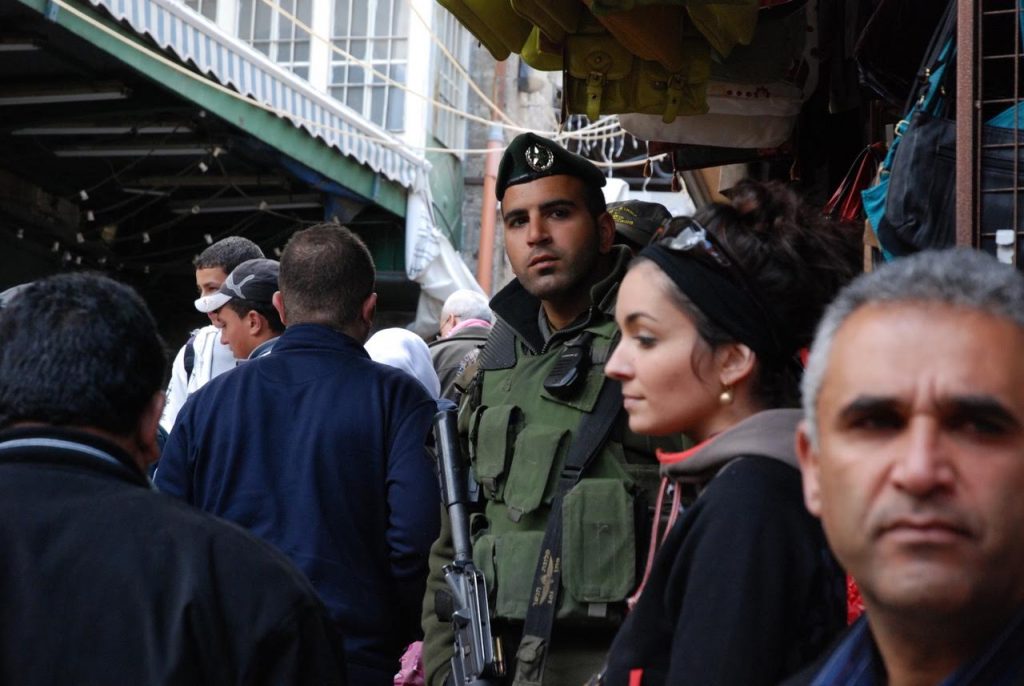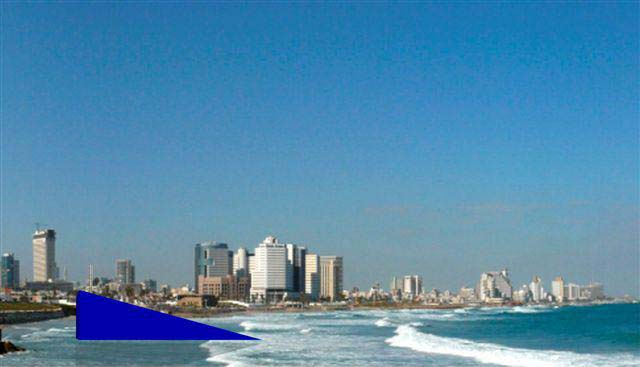2010/13, Power Cells / Kraftzellen 100






Intercultural education project at the Institute for Art and Aesthetics of the University Duisburg-Essen
September 2010 until July 2013
Power Cells 100
An inter-cultural artistic and educational project between the cities of Cologne and Tel Aviv realised by the University of Duisburg-Essen and supported by the German Federal Ministry of Education and Research.
The project „Power Cells 100“ evolved from an idea by Professor Sacharow-Ross who has been pursuing an integrative und inter-culturally oriented pedagogical aim with his art for many years. Based on the assumption that there is an integral network of experiences and relations between all humans, which can be discovered and supported, the intention is to develop and test innovative instruments and measures for inter-cultural education and integration, in the spirit of the “syntopy concept”. Syntopy stands for the connection between the spatially and notionally separate and is the pre-condition for creativity, which grows from the association between explicit knowledge, implicit ability and personal knowledge.
The project is based on two distinct parts:
On the one hand students in Israel and Germany will have an opportunity to communicate with each other artistically and explore and gain a better understanding of the manifold dimensions of issues such as war, the military, religion, family, boundaries/dislimitation and sexuality. This will substantiate to what extent cultural values influence the communication, so that in a second step, action strategies for inter-cultural encounters can be developed, in the light of the knowledge gained about the students own cultural imprints and phenomena relating to the foreign culture. On the other hand, the creation of a two-part wedge shaped sculpture, with one part to be erected in the harbour of Cologne and the other one in the harbour of Tel Aviv, is an integral part of the project. The wedge in Cologne directs the viewer’s gaze to Tel Aviv; the wedge in Tel Aviv is the mirror-image, pointing towards Cologne. The way the two parts of the sculpture are aligned to each other, they form a Star of David. The connection between the two parts of the project consists of the fact that the artistic results of the exchange between the youths of these two countries will form the core of the sculpture. The “Power Cells” containing the various visualisations of the preceding thought processes and discourses are a very tangible manifestation of the emotional, social and reflective processes of the participants. Implanted into a capsule, they form the main element of the sculpture, which renders the movement of the entities towards each other possible and embodies a symbolic bridge between the two cities, nations and cultures in the connective spirit of the project. The Power Cell capsules will be embedded into the two parts of the sculptures in Tel Aviv and Cologne in an inauguration ceremony. There will be an annual ceremony, celebrating the embedding of the capsules
Kraftzellen 100
Ein vom Bundesministerium für Bildung und Forschung gefördertes interkulturelles Bildungsvorhaben der Universität Duisburg-Essen zwischen den Städten Tel Aviv und Köln
Das Projekt „Kraftzellen100“ ist die Weiterentwicklung einer Idee von Herrn Prof. Sacharow-Ross, der seit vielen Jahren mit seiner Kunst eine integrativ und interkulturell orientierte pädagogische Intention verfolgt. Basierend auf der Grundannahme, dass zwischen allen Menschen ein Erfahrungs- und Beziehungsgeflecht besteht, das es zu entdecken und zu fördern gilt, sollen im Sinne des „Syntopie-Gedankens“ – wobei Syntopie als die Verbindung des räumlich und gedanklich Getrennten und als die Voraussetzung für Kreativität zu verstehen ist, die aus der Verbindung von explizitem Wissen, implizitem Können und persönlichem Wissen erwächst – innovative Instrumente und Maßnahmen zur interkulturellen Bildung und Integration entwickelt und erprobt werden.
Das gesamte Vorhaben basiert auf zwei Teilbereichen. Einerseits sollen israelische und deutsche Schüler und Studenten innerhalb des Projektes miteinander in Beziehung treten und sich mittels künstlerischer Kommunikationsformen die vielfältigen Dimensionen von gedanklichen Einheiten wie Krieg/Militär, Religion, Familie, Grenze/Entgrenzung, Sexualität begreiflich machen. Konkretisiert wird dabei, welchen Einfluss kulturprägende Werte auf die Verständigung haben, um in einem zweiten Schritt gemeinsam mit Hilfe des erlangten Bewusstseins um eigenkulturelle Prägungen und fremdkulturelle Phänomene Handlungsstrategien für interkulturelle Begegnungssituationen entwickeln zu können.
Andererseits ist das Erschaffen einer zweiteiligen keilförmigen Skulptur, die jeweils im Hafen von Tel Aviv und Köln errichtet werden soll, ein wesentlicher Bestandteil des Projektes. Der Kölner Keil richtet den Blick auf die Stadt Tel Aviv. Der Tel Aviver Keil zeigt dementsprechend spiegelbildlich auf die Stadt Köln. Aufeinander gerichtet bilden die beiden Skulpturteile den Davidstern.
Die Verbindung beider Teilbereiche besteht darin, dass die künstlerischen Ergebnisse der gemeinsamen Beschäftigung junger Menschen zweier Länder den Kern einer Skulptur bilden sollen. Mit den auf verschiedenste Weise gearteten Visualisierungen der vorangegangenen Reflektionsprozesse in Form der „Kraftzellen“ zeigt sich die sichtbare Umsetzung der emotionalen, sozialen und gedanklichen Prozesse der beteiligten Personen. Zusammen in eine Kapsel eingesetzt bilden sie das Hauptelement der Skulptur, welche die aufeinander gerichtete Bewegung der Entitäten erst ermöglicht und den symbolischen Brückenschlag zwischen beiden Städten, Ländern und Kulturen im verbindenden Sinne des Projektes symbolisiert.
Die Kraftzellenkapseln werden innerhalb der beiden Teile der Skulptur in Tel Aviv und Köln feierlich eingebracht. Die Kapsel-Legung erfolgt in einer jährlichen Zeremonie.




The project ,,power cells 100″ is based on an idea of the artist Igor Sacharow-Ross: two sculptures in public space – one in Cologne, the other in Tel Aviv – were intended to incorporate artefacts manufactured by children and teenagers. Thereby, they should serve as ‘power cells’ of intercultural dialogue. It was not by accident that Israel was chosen for the project: even if sustained dialogue is the goal of worldwide relations more generally – nowhere else do Germans have a more lasting obligation as they do towards the Jewish state.
With the help of the Federal Ministry of Education and Research, the original idea of running an art project in practice became an intercultural education project. Step-by-step, the project revealed a microcosm of perspectives of perception and perspectives of action that reached beyond rhetoric and symbolic gestures. Nationalsocialism and the Holocaust, which have their roots in the Antisemitism of the German Völkish Movement, have been recognized as the main negative example of any political and cultural action. Notwithstanding most recent slogans about the return to ‘normality’, this needs to remain the case! Nowhere else is this as evident as in peoples’ relationship towards Israel. However, remembrance as such is by far insufficient to define their real life perspectives: mutual understanding, empathy and maybe even sympathy only develop through solidarity as shown in daily, vital activities of the individuals.
‘Power Cells 100’ was newly organized as intercultural education project that focused on issues beyond those coping with the past. Without underestimating the power of institutions and systems, young people increasingly define their socio-cultural perspectives by utilizing the room for maneuver that aesthetic education provides for them. In doing so, they create options, cultivate traditions, show creativity and connect the unknown with new choreographies of action. This may sound strange insofar as not only in Israel and Palestine, many young people are less concerned about participating in cultural capital activities than in maintaining material existence. However, participation in cultural life has not become superfluous – on the contrary: as the territorial conflicts these days show, fundamental insistence on national identity leads to political deadlock and isolation. On the contrary, the goal of ‘power cells 100’ was to encourage the consistent assimilation of the known and the unknown, which by now has become an almost utopian, transnational socialization model of a worldwide community based on tolerance. Where else is the relationship between preservation, change, understanding and displacement – which is essential for such a model – better visible than in creative processes? In that respect, children and teenagers from Germany and Israel have gathered, accompanied by teachers, artists and students from both countries. By doing so, all participants have learned how to develop and to mobilize their own potential to justify once more their trust in the world.
Das Projekt ,,Kraftzellen 100″ geht zurück auf eine Idee des Künstlers Igor Sacharow-Ross: Zwei Skulpturen im öffentlichen Raum, die eine in Köln, die andere in Tel Aviv, sollten von Kindern und Jugendlichen angefertigte Artefakte aufnehmen und gleichsam als Kraftzellen einer interkulturellen Verständigung wirken. Nicht zufällig fiel die Wahl auf Israel, denn so sehr Verständigung weltweit als übergeordnetes Ziel gilt, nirgendwo haben die Deutschen eine nachhaltigere Verpflichtung als gegenüber dem jüdischen Staat. Aus der ursprünglichen ldee eines Kunstprojektes wurde mit Hilfe des Bundesministeriums für Bildung und Forschung ein interkulturelles Bildungsprojekt, bei dem sich nach und nach ein Mikrokosmos von Wahrnehmungs- und Handlungsperspektiven jenseits der großen Worte und symbolischer Gesten abzeichnete. Dass der aus dem Antisemitismus der völkischen Bewegung hervorgegangene Nationalsozialismus und mit ihm der Holocaust gleichsam zum Negativ-Index politisch-kulturellen Handelns geworden ist – und dies trotz jüngster Normalisierungsparolen auch bleiben muss ist nirgendwo so evident, wie in den Beziehungen zu Menschen in Israel. Zur Definition ihrer lebensweltlichen Perspektive reicht die Erinnerung allerdings bei weitem nicht aus. Gegenseitiges Verständnis, Empathie und vielleicht auch Sympathie entstehen erst durch die Solidarität in alltäglichen, vitalen Tätigkeiten der Individuen.
Neu organisiert als interkulturelles Bildungsprojekt, fokussierte sich ,,Kraftzellen 100″ auf Themen jenseits der Vergangenheitsbewältigung. Ohne die Macht der Institutionen und der Systeme unterschätzen zu wollen, sehen junge Menschen ihre soziokulturellen Perspektiven doch zunehmend darin, den Spielraum ästhetischer Erfahrung zu nutzen, dabei mehrere Optionen zu entwickeln, Traditionen zu pflegen, kreativ zu variieren und Unbekanntes mit neuen Handlungschoreografien zu verbinden. Dies mag insofern befremdlich klingen, als es für viele junge Menschen nicht nur in Israel und Palästina weniger um die Teilhabe am kulturellen Kapital als um den Erhalt ihrer ökonomischen Existenz geht. Überflüssig indes ist eine kulturelle Teilhabe nicht geworden, im Gegenteil: Wie die fragwürdigen Flurbereinigungen dieser Tage zeigen, führt fundamentalistisches Beharren auf nationale Identität auf politische Abwege. Demgegenüber war das Ziel von ,,Kraftzellen 100″ die ständige Assimilation von Vertrautem und Fremdem anzuregen – ein heute fast schon wieder utopisch anmutendes, grenzüberschreitendes Sozialisationsmodell einer von Toleranz getragenen weltweiten Community. Wo anders bildet sich das hierfür grundlegende Verhältnis von Bewahren, Verändern, Verstehen und Verdrängen besser ab als in kreativen Prozessen? Darin haben sich Kinder und Jugendliche aus Deutschland und Israel zusammengefunden, begleitet von Lehrern, Künstlern und Studierenden aus beiden Ländern. Alle Beteiligten haben dabei gelernt, wie man das eigene Potenzial entdeckt und mobilisiert, um einmal mehr das Vertrauen in die Welt zu rechtfertigen.
Peter Ulrich Hein aus Kraftzellen/power cells – ein interkulturelles Bildungsprojekt mit deutschen und israelischen Kindern und Jugendlichen/a project on intercultural collaboration between young germans and israelis, Edited by Bernd Bieling und Peter Ulrich Hein, Lüdenscheid 2015
Exhibitions / Ausstellungen:
Kraftzellen 100. Abschlusspräsentation, Deutsches Sport und Olympia Museum Köln (3.10. – 7.10.2012)
Publications / Publikationen:
Kraftzellen. Power Cells. ein interkulturelles Bildungskonzept mit deutschen und israelischen Kindern und Jugendlichen hg. v. Peter Ulrich Hein, Lüdenscheid 2015.